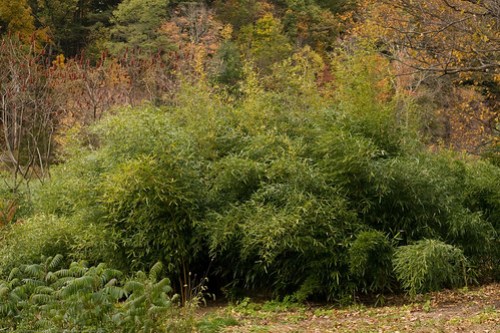Archive for the ‘permaculture’ Category
New Year’s Manifesto
This is an extremely powerful video and Andrew Faust absolutely speaks for me
OCCUPY THE ECONOMY : Andrew Faust – Permaculture – OWS from TerraVisus on Vimeo.
Andrew Faust Permaculture Designer: HomeBiome.com
Costa Boutsikaris Filmmaker: TerraVisus.com
Who is this Jean Pain guy?

I thought I would share a little about this guy Jean Pain who completely and most effectively hacked the DIY energy thing some time back! Obviously, the world has NOT been paying attention (as old timers know well).

In a nut shell, Pain was a forester in France who noticed the mighty thermal output of microbial action on composting materials. He proceeded to harness this heat by rigging large mounds of shredded brush (from his management of the forests) with an internal methane producing biomass bioreactor and heat capture coils built into the mound structure.
Click through to the page to learn more!

One Helltastic Week: Haiti and Permaculture First Responders

[If you would like to volunteer for this effort, please drop me an email at nika dot boyce at gmail dot com and I will get you into our PermaCorp volunteer database and keep you up to date]
Like you, I have been simply swept away by the brutal earthquake that has subsumed Haiti into a hell that gets worse by the day.
I have been mostly learning about it via CNN and on twitter. I have been pouring over the satellite images of the destruction as seen in Google Earth.
As I write, Reuters says that more than 200,000 people have died and as of this evening, they have buried 40,000 dead. MANY more bodies lay in the streets and under endless tons of ruined buildings.
Thank goodness for twitter and the permaculture people I have gotten to know there because that is the only thing that is keeping me from feeling utterly lost in desolation over this apocalypse.
It is through @gaiapunk, who is something of a one-man permaculture media empire, that I have begun to learn about and really love the idea of Permaculture First Responders.
He posted several links to projects already either training Permaculture First Responders or projects on the ground in Haiti and other disaster struck places.
Permaculture First Responder – Permie Disaster Relief Training Course
Cegrane Camp Permaculture Rehabilitation Project
Cuba-Australia Permaculture Exchange
I have been wondering how I might be able to help nurture this idea here, tucked away in my small part of the world without actually going to Haiti myself.
I have been chatting with Cory at Permaculture.org and am happy to share this link that is very constructive in terms of the next steps.
Help for Haiti from Permaculture
From that site you will see:
Some of the projects which permaculturists can design and implement are:
Short Term:
Building sewage systems, composting toilets, compost and recyclying centers, rocket and solar stoves, temporary shelters (perma-yurts), water catchment and filtering, and plant nurseries.
Rocket and solar stoves are key because the major ecological problem in Haiti which causes huge hardships from many angles is deforestation for fuel. Solar stoves use no wood and rocket stoves, which can be made out of old cans and pipes laying around, use almost no fuel and can cook with twigs.
Correct diversion of sewage, human waste, and water can substantially contribute to rebuilding farm land in the area – the idea is to create the conditions for long term self-sufficiency and abundance with even our short term handlings.
Long Term:
Permanent, low cost, earthquake resistant natural buildings, water storage, earth works, renewable energy, permaculture food forests, broad-scale reforestation, farms, aquaculture systems, and community buildings such as schools and health centers.
We are currently working via a worldwide network of permaculturists to bring resources to Haiti, and several permaculturists are interested in traveling to Haiti to help with the rescue and relief efforts, but need funding to do so. We are in contact with disaster handlers in the area who they can coordinate with for maximum effectiveness. There is a permaculture project existing in Haiti that we are working to connect with as well. If you have any questions, do not hesitate to contact me – I am also willing to meet with potential funders to answer questions personally.
If you want to donate now, please use the “Haiti Donations – Donate” Paypal button on the right hand side of this web page. For past projects we’ve funded, please see the Pine Ridge Lakota reservation article under “Projects.” We will use initial funding to get people there on the ground and most needed resources such as equipment for building the short term items needed. Whenever possible, we use existing resources in the area that are free or very inexpensive – permaculture is very effective at getting the maximum return for energy invested, so you will know your money is going to a good cause.
I know that the idea of surviving this disaster is like a miracle and then the idea of Haiti being able to climb up from a place so dark seems too distant to contemplate.
To this end, I have been graphing out what the needs would be over time for people living through such overwhelming disasters.
I think its extremely important to do this now and for Haitians, now, because these same ideas and strategies will be needed again and again as climate change progresses.

In the graphic above, I try to illustrate the needs of a person immediately after surviving a catastrophe (earthquake, fire, flood, etc). The needs are pretty basic but inelastic in their being absolutely needed.

Once the person is out of immediate danger and is left standing with nothing, no assets, nothing but other survivors around them, they need to find a way to rebuild, regenerate, and boost their resilience so that they become embedded in a community that provides current and future needs.

In this next graphic, I extend on the specific needs outlined in the second graphic with permaculture and no/lo-carbon and low cost strategies for coping and rebuilding.
Please take some time and explore these graphics and tell me what you think, whats missing? What would you add?
Please consider becoming involved in helping the Haitians, using permaculture or by other means, as where the Haitians are right now, that hell, could easily be ours, any of us.
We are, in many ways, their community.
We are each other’s community and it is through us banding together that we build resilience in every place.
Greenhouse with poultry

This fall and this winter I have been thinking about a greenhouse I would love to build. It integrates the heat of slowly decomposing hay bales, chickens, and two 2 foot deep, 16 foot long raised beds. I have to admit that for now, its a dream as I do not have the financial means to put this together for now.
A greenhouse that integrates the heat produced by chickens is something much talked about in permaculture thought. If you google a bit, there seems to be some doubt that people are able to make this happen. As I have not built and tested my concept, I can not make any claims. I think, though, that a lot of the doubt comes from arm-chair gardener types who do not know much about gardening or chickens.
The hay bales are seen in the diagram, making up the north facing wall. There is a gap between the bale wall and the first raised bed. This gap, 16 feet long and 2 feet deep, 3 feet wide perhaps, will be covered by chicken wire, forming a chicken run between the two ends of the greenhouse.

On either end of the greenhouse will be housing for chickens (perches, areas to run, areas for feeding and watering) separated from growing areas by chicken wire. The growing area above two raised beds will be under the sloping roof of the green house. My vision is for this greenhouse to supply us with lettuces and nutritious greens through out the cold cold winter here.
I thought I would share some of what little is going on here, in the depths of winter. I have also been snuggling on the couch with seed catalogs and generally trying to stay warm without feeling too pouty that the garden is out of commission for the season.
We are also watching our 9 pregnant goats, some of them are quite large now with child. I continue to mentally prepare for labor and delivery.
Edible Forest Gardening Workshop

Recently I had the great fortune of attending Eric Toensmeier‘s Edible Forest Gardening workshop in Holyoke, MA Oct 16 to Oct 18. Before I go any further let me just say that if you have a chance, please go to this workshop the next time they hold it. You will be very glad you did! I am not sure when the next one might be. I will certainly blog about it here when I find out. There are other workshops that look VERY interesting at Eric’s “Event” page.

As you may recall, Eric, along with Dave Jacke, wrote “Edible Forest Gardens (Vol.s 1 and 2)” and he also wrote “Perennial Vegetables“, a resource for those of you interested in learning about new perennial edibles suitable for your region.
There were three other people who made this event possible.

Jonathan Bates, of Food Forest Farm, who was a fantastic co-presenter and amazing resource for so many of the MILLIONS of questions that I had. Check out his site and learn more about what his farm can do for your budding perennial food garden.

Steve Breyer, Tree God Extraordinaire and moss evangelist of the Tripple Brook Farm, very generously hosted the workshop on two of the days. His farm / nursery is an amazing play land of edible plants and northern food bearing trees.
And finally, Marikler Toensmeier (Eric’s lovely wife) who did a ton of work putting together all the delicious and wholesome foods at this event. I dont have any photos of Marikler because it seemed intrusive!
The conference began on the evening of Friday October 16th at Holyoke Community College. We gathered in the conference room you see in the photo at the top of this page and Eric and Jonathan did a lovely job of immersing us into the world of edible forest gardening with an overview of the various aspects of forest and forest-like gardens as well as some permacultural principles.
This got us ready for the next day when we were going to be meeting at Eric and Jonathan’s homes and shared urban perennial garden for a tour and further discussions about edible forest garden design. If you have the book Perennial Vegetables, you will recognize his garden in some of the photos in the book.
Before we ended the night, we snacked on ripe paw paws!

The next morning, Saturday, bright and early and quite chilly, we met at Eric and Jonathan’s home to begin our tour. We started with the very sunny morning sun side of the house and learned about it’s microclimate and the sorts of plants that they are able to grow there. Mind you, back in my garden it had been snowing and the season was DEFINITELY over. It actually snowed at our home while it was nice in Holyoke.
We started the day off by tasting these cute super tiny wild cucumber like fruitlets. I can not remember the name of this plant, sorry!

They also grow non-edible bananas here.



We walked into the back and learned about how they went from a hardpack urban waste lot to a wonderful abundant perennial garden via a specific design process.

I want to take an aside and say just how glad I am to have gotten a chance to meet Phil and Tom, up from Brooklyn. They have been diligent campaigners for our world and transition. They have put together peak oil, permaculture, urban gardening, and many other sorts of events in the NYC area over the years. I look forward to getting to know them better in the future!
We then split up into groups and Eric and Jonathan took us through the garden, plant by plant, and explained pretty much everything about them from their polyculture setting, to their function in the larger design, to the types of fruits they bore (and we got many taste tests) as well as how they didnt fit in or might need to be or had been modified or moved to be a better part of the whole design.
Here are a few photos from the tour.











After lunch we took off for the Tripple Brook Farm to begin a look at a large scale of edible forest gardening.
As I mentioned before, Steve Breyer owns this amazing place. There is so much one can say but I am going to simply share images from the tour we took.






Steve feels very strongly that mosses should be the preferred ground cover (versus grasses).




These photos totally do not give you a sense for how raw and cold it was that day. At this point in the tour we sheltered in Steve’s work shed (with warm wood stove) where we got to taste pine nuts, chestnuts and hardy kiwis and american persimmons and dogwood tree fruits (Cornus kousa).








Steve had the chestnuts roasting on the woodstove all morning. We have nut allergies so I didnt taste them but I fell in love with the way they looked! I shot a series of photos of these crazy spiky chestnuts.









That evening we went back to Holyoke community college and delved deeper into polyculture design and learned quite a lot about grouping polycultural plantings that enhance and nurture each other and which build a more robust environment.
Some of what we learned that evening we used the next day in a practical way.
I went home just wiped out from that day. I was really worried that I would have no energy to get up and make the hour drive out early on Sunday, the third and last day. An odd thing happened though. I awoke really refreshed and ENJOYED driving at the crack of dawn out into the cold weather. I think there is something in these fruits that did me some good. Its also the fresh air and also, hugely more important, that I was doing something I found VERY exciting and engaging and with people who I really respected and admired.
This is quite a change from most of the jobs I have had in recent years – soul robbing activities. I can definitely see myself doing this for a living (I cant say how but it would be deeply satisfying).
The third day was intense. We assembled ourselves in Steve’s work shed and set to work on designing a new planting design for part of his nursery.
We did site assessment, analysis, and then in-depth design, as groups. It was an exercise in design as well as interpersonal communications.
While we didnt implement this particular design (there is only so much you can do in a few hours!) we pitched in and helped clean up the site and also put in some new plantings.
I have learned so much from this workshop. I would recommend it highly to anyone and I hope that some of you are able to attend future events like this. If you cant come out to tundra-like Massachusetts, you likely can find some near you!
Let me know if you do and how it goes!
Permaculture: American Pokeweed (Phytolacca americana)

As part of my self-learning on permaculture, I have been walking out my back door and selecting a plant that catches my eye and then finding out everything I can about that plant. I will write here about some of the more interesting ones.
To identify plants and trees, I use google, twitter (especially with hashtags #horticulture #permaculture #botany #garden and similar relevant terms), and especially a certain flickr group called “ID Please” where people post images of an organism they would like to identify. Once they do this, others then give pretty educated guesses on identification.
I will add identified plants, mushrooms, trees, fauna, to my Humble Garden permaculture page at the link -> Permaculture.
Eric Toensmeier, co-author of Edible Forest Gardens (2 volume set), wrote about pokeweed in his book “Perennial Vegetables: From Artichokes to Zuiki Taro, A Gardener’s Guide to Over 100 Delicious and Easy to Grow Edibles
“.
On page 176 he explains that while the mature plant is quite poisonous, especially those parts with red coloring, people have been eating the young leaves for likely thousands of years.
Young shoots 6 – 8 inches long are harvested and then the dickens is boiled out of them (breaks down the poisons). The berries are an intense red color and look rather juicy.
Keep this plant away from kids, pets, and livestock as the mature form is not fit for fresh eating.

It seems that red is Mother Nature’s way of saying “Beware”.

My own observations:
This plant grows VERY fast and puts on a lot of biomass in one season. It is growing in a region that was greatly disturbed (was fill brought in to build up part of the landscape) and has been spreading somewhat every year. I have not noticed it growing in the much more mature and undisturbed forest adjacent to it so I am guessing it came with the fill or the top soil that was imported from a dairy farm (the top soil from the pasture of a local dairy farm that went bust, filled with cow bones!).
Use strategy:
As I have small children and loads of mischievous goats who do not speak english and even if they did, are so oppositional that they would eat the pokeweed if told not to, I plan on trying to suppress this plant as much as I can.
I know they have a tenacious root system and that they also spread by or are disbursed by birds who eat the berries.
I am going to analyze the surrounding vegetation to see if they can be considered beneficial. If yes then I might just yank the pokeweed and let those beneficials fill in. If not, then I am going to look at this “waste” area a bit more closely to see how I can use it better (ok, I am going to do that anyways but the pokeweed may be asking me to do this sooner than later).
Scientific Name:
Kingdom: Plantae
Division: Magnoliophyta
Class: Magnoliopsida
Order: Caryophyllales
Family: Phytolaccaceae
Genus: Phytolacca
Species: P. americana
Medicinal Uses: (sourced from the Wiki: SOURCE)
Physiologically, phytolacca acts upon the skin, the glandular structures, especially those of the buccal cavity, throat, sexual system, and very markedly upon the mammary glands. It further acts upon the fibrous and serous tissues, and mucous membranes of the digestive and urinary tracts. Phytolacca is alterative, anodyne, anti-inflammatory,antiviral, anti-cancer, expectorant, emetic, cathartic, narcotic, hypnotic,insecticide and purgative. (Phytolacca.—Phytolacca. | Henriette’s Herbal Homepage, http://www.swsbm.com/FelterMM/Felters-P.pdf)
Anti-cancer: The anticancer effects appear to work primarily based upon anti-tumor and anti-inflammatory properties, along with immune stimulant functions. Additional support for fighting cancer may come from antiplasmodial or cytotoxic fractions of the phytolacca toxin. And, although it has not been confirmed as a cause or factor of cancers, the antimicrobial, antiviral and antithelmetic properties of certain constituents might also play a part in anticancer activity. Further there are aromatase inhibitors and antioxidant properties that may affect cancer. Anti-cancer, antileukemic or anti-tumor constituents include: ascorbic acid, astragalin, beta carotene, caryophylline, isoquercitin, oleanolic acid, riboflavin, tannin and thiamine. Of the constituents known to fight cancer, oleanolic acid appears to be the most significant with its anticarcinomic; anticomplement, antihepatotoxic; antiinflammatory, antileukemic; antileukotriene, antinephritic, antioxidant, antiperoxidant , antiPGE2, antiplasmodial, antisarcomic; antiseptic, antiTGFbeta, antitumor (Breast, Colon, Kidney, Lung, Pancreas); antiviral, aromataseinhibitor; cancer-preventive; hepatoprotective; immunomodulator;leucocytogenic; NF-kB-Inhibitor; phagocytotic; and prostaglandin-synthesisinhibitor properties (Jeong SI, et al, Phytolacca americana inhibits the high glucose-induced mesangial proliferation via suppressing extracellular matrix accumulation and TGF-beta production, Phytomedicine. 2004 Feb;11(2-3):175-81)
Anti-inflammatory constituents include saponins in poke root and triterpenes in the berries: alpha spinasterol, ascorbic acid, calcium oxalate, caryophylline, isoquercitin, jialigonic acid, and oleanolic acid.
Immune stimulant constituents include astragalin, ascorbic acid, beta carotene, phosphorus and oleanolic acid.
Anti-AIDS: Pokeweed antiviral protein (a Single Chain Ribosome Inactivating Protein or SCRIP) is being considered as a potent inhibitor of human immunodeficiency for AIDS There are also well-known three different pokeweed antiviral protein (PAP)isoforms from leaves of Phytolacca Americana (PAP-I from spring leaves, PAPII from early summer leaves, and PAP-III from late summer leaves) that cause concentration-dependent depurination of genomic HIV-1 RNA.[1][15] (Phytolacca americana – Plants For A Future database report, Bodger MP, McGiven AR, Fitzgerald PH, Mitogenic proteins of pokeweed. I. Purification, characterization and mitogenic activity of two proteins from pokeweed (Phytolacca octandra), Immunology. 1979 Aug;37(4):785-92)
Antiviral: PAP, oleanolic acid, ascorbic acid, tannin, mitogen.
In addition: Betanin and oleanolic acid are antiperoxidative and the vitamins plus caryophylline and oleanolic acid are antioxidant. Astragalin, isoquercitin and caryophylline are aldose-reductase-inhibitors.
Clearly pokeweed has an impressive diversity of bioactive compounds on-board. Its strong medicine and an advanced topic!
















